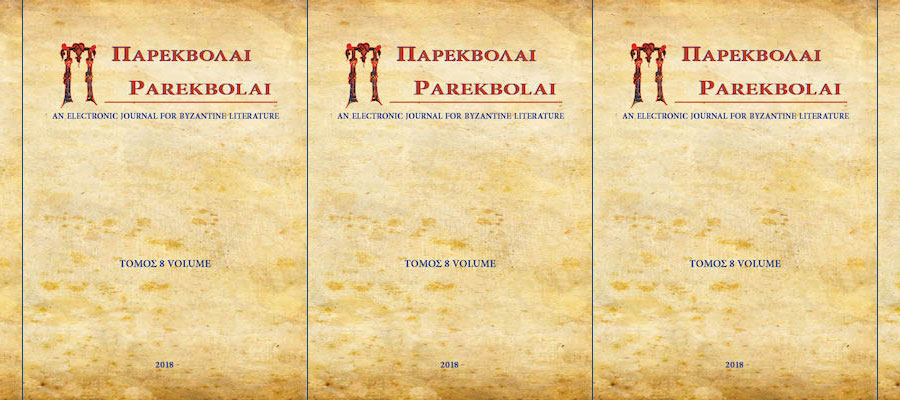Parekbolai. An Electronic Journal for Byzantine Literature, volume 8 (2018).
CONTENTS
Ἐπιγραφῆναι τῇ σορῷ σου τὸν φθόνον. Ioannes Cheilas in the Funerary Epigrams of Manuel Philes
Demetra Samara
Manuel Philes, the most prolific poet of the early Palaiologan era, composed at the beginning of the 14th century twelve dodecasyllable four-verse funerary epigrams for Ioannes Cheilas, the deceased metropolitan of Ephesos, which are preserved in four manuscripts dated in the 14th and 15th centuries. The present paper provides the critical edition and an English translation of these epigrams, in which the main idea that comes up is that of the envy (φθόνος) together with wear (φθορά), motifs that raise questions about the ambiguous personality of the deceased. The epigrams present Cheilas as a man who became a victim of injustice and show a close relationship between him and the poet.
Mείναντα κενεόν: un locus criticus e una citazione omerica in una lettera di Demetrio Calcondila a Marco Musuro
Gianmario Cattaneo
The author demonstrates that a passage of a Greek letter written by Demetrius Chalcondylas to the famous scholar and editor Marcus Musurus, which was considered corrupted by the editor, is actually genuine, and it contains an allusion to Homer, Iliad, 2.298. Analysing the manuscript which preserves this letter (Par. gr. 2966), he restores the correct reading, and explains the meaning of the sentence in this context.
Il mecenate Costantino Licudi e la monodia di Michele Psello in memoria di Maria Sclerena (Poem 17 Westerink)
Frederick Lauritzen
Psellos’ funerary poem in memory of Maria Skleraina (Poem 17 Westerink) was formally addressed to the emperor Constantine IX Monomachos and to her family, but actually the main recipient of the poem was the imperial minister (mesazon) Constantine Leichoudes, future patriarch of Constantinople (1059-1063). Psellos wrote the poem within the cultural atmosphere promoted by Leichoudes at the complex of Saint George of the Mangana, where she was buried. Thus Leichoudes was part of the culture at the court of Constantine IX Monomachos, in a similar manner to Maecenas under the emperor Augustus.
Thersite en son Palais ou la désastreuse épopée d'Alexis III Ange dans l'Histoire de Nicétas Chôniatès
Stanislas Kuttner-Homs
Alexios III Angelos was one of the most hated emperors of Byzantine history since the historian Niketas Choniates heartfully despises him in the books dedicated to his reign within his History. Niketas describes him as indolent, impotent, conceited, and as liable for the first fall of Constantinople under the crusaders’ and Venetians’ armies. This paper does not claim to restore to favor nor discharge Alexios, but to consider how Niketas creates a character modeled by literary patterns, such as Eteocles or Thersites, which are all related to the antihero archetype. The aim of Niketas seems not to be only to frame a persona as a playwrighter or a novelist would do, but as a mosaist to allow each protagonist of his History to fit into God’s designs for the Roman Empire.
